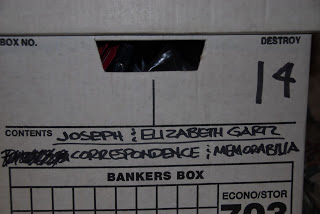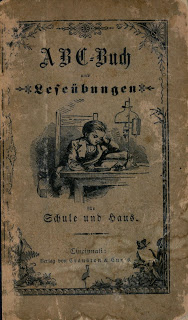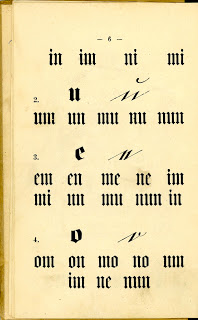While Josef makes his way across the Atlantic to America in early January, 1911, I thought I’d use his “travel time” to fill you all in on some details of this family archaeologist’s dig. First–a little more about the unreadable letters, diaries and documents.

21, 16, 4, 23, 24, 2 … Who needs Numerical Order? Boxes I access regularly are in my office. These… stored away.
Box 14 became the repository with this label: “Joseph and Elisabeth Gartz, Correspondence and Memorabilia.” (We used the Americanized spellings of their names.
My older brother, Paul, gets the credit for the letters’ continued existence. Both my younger brother, Bill, and I could have been persuaded to toss them. Paul wanted to keep everything that could be remotely related to family. We sighed. “No one will ever be able to read them!” I declared.
Now I’m the only sibling that has even passable German language skills. (For lack of a better idea, I chose German as my college major. Within a year, I got the payoff for that impulsive decision: I spent my senior year studying at the University of Munich, which fixed the language into the deep recesses of my brain, even when surface knowledge was forgotten).
In 1994, after almost a quarter century hiatus from German, raising two young children, acting as executor for my Mom’s estate, and with a newly gutted and renovated house that required serious attention, I looked at those letters and prayed for dispensation. I was certain I could never endure the agony (with my creaky and diminished language skills) or the time (see above) of translating the undoubtedly mundane details from the lives of people of whom I had no knowledge. Were they even relatives? Oh…and then there’s the ILLEGIBLE part.
Just to give you a sense of what I’m talking about, here’s a little book my grandmother kept, copyrighted 1881.The title: ABC Buch und Leseübungen für Schule und Haus: (Book and Reading Practice for School and Home). Its intent was to teach children to recognize both printed and handwritten letters of the alphabet in late 19th Century German. It shows the physical style of writing my grandparents, their friends, and relatives would have learned. This little book shows the handwriting used in the letters.




I’ve read every post. The mother of my son-in-law has Transylvanian roots. She grew up in Budapest. I am surprised that those from this region left from Bremerhaven. I’m really enjoying your posts.
Bremerhaven was a LONG distance to travel, but they had to get to a seaport and Transylvania was far inland. What a daunting trip! Thanks so much for reading and commenting, and I’m heartened that you’re enjoying these posts!
I’m drooling over the penmanship book Linda. What a help in decoding the old handwriting. I need to look for something like this for Hungarian.
You are, by the way, the only person I’ve ever “known” (even virtually) who inherited more family papers than I. I have several trunks full, but they would not add up to your 25 banker’s boxes – maybe 20.